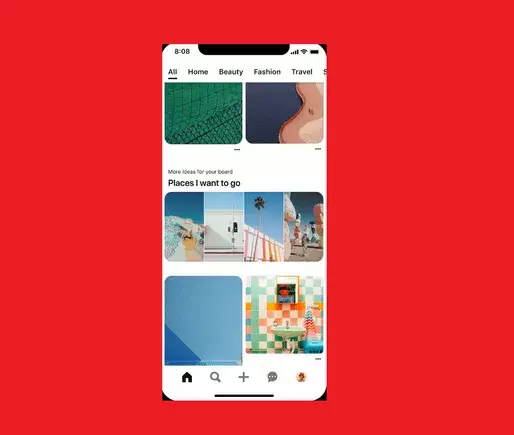Pinterest is constantly evolving its platform to enhance user engagement and improve the overall experience. Recently, it has rolled out a series of new full-width module types, designed not only to diversify the types of content users can interact with but also to strategically boost the site’s engagement metrics. These modules serve as an intriguing case study in how digital platforms can innovate to capture user interest in more compelling ways.
Revolutionizing Content Interaction with Two Distinct Module Types
The introduction of landing page and carousel modules marks a significant shift in how Pinterest users navigate and engage with Pins. The landing page module takes users on a journey away from their current feed, bringing them to a dedicated space filled with related content that they can interact with in greater depth. This move reflects a broader trend in the digital landscape where users are seeking more immersive experiences.
On the other hand, carousel modules provide a collection of Pins arranged horizontally, allowing users to swipe through multiple ideas effortlessly. This format not only frees users from the monotonous scrolling associated with traditional feeds but also encourages serendipitous discovery. This fundamental shift in how content is presented aligns seamlessly with Pinterest’s ethos of inspiration and exploration, capturing the very essence of what the platform stands for.
Personalization at Its Core
Pinterest has implemented sophisticated algorithms that underlie the functionality of these new modules. The platform not only encourages engagement but carefully curates what users see based on their prior interactions. If a user exhibits a lack of interest in a specific module type, Pinterest smartly opts out of showing that module again for a certain period. This level of personalization is vital in today’s saturated media landscape, where users are overwhelmed with information and often tune out content that fails to resonate.
The mechanism described by Pinterest revolves around tracking user behavior meticulously; it analyzes historical data concerning module engagement and interaction rates. By applying these insights, Pinterest crafts a tailored feed that attempts to maximize the chances of interaction, thus fostering a more user-centric experience. This is not just a technological feat; it is a strategic initiative aimed at retaining users in a network that can often feel like a sea of static images.
A Balancing Act: Modules vs. Pins
One of the challenges Pinterest faces with its introduction of modules is striking the right balance between showcasing these new features and allowing room for high-performing Pins to shine. Initial attempts at integrating these modules could inadvertently replace engaging content with what users might find less appealing. In response, Pinterest has adopted a “skip slot” approach that dynamically adjusts based on predicted user engagement. This adaptability ensures that a module will only sporadically replace a Pin when its potential for interaction is deemed higher, thus preserving the organic dynamism of the feed.
Such an innovative solution speaks volumes about Pinterest’s commitment to maintaining user satisfaction while simultaneously increasing platform engagement metrics. Marketers monitoring these changes should pay attention, as it indicates a shift toward a more intelligence-driven system that prioritizes user behavioral insights for content showcasing.
Implications for Marketers
For businesses and marketers looking to leverage Pinterest to its fullest potential, these new modules present exciting opportunities. Understanding how Pinterest integrates user engagement and adapts content delivery will be crucial for strategizing marketing campaigns. Brands can no longer rely on merely creating stunning visuals; they must also be attuned to the rhythm of engagement patterns and the nuances of user preferences as dictated by the new module formats.
The potential for reaching audiences through curated and personalized content is formidable. Brands should not only invest in high-quality visuals but also consider the wider context in which these modules operate. Engaging with users via landing pages or designing content that fits seamlessly into carousel modules could become game-changing tactics in the ongoing digital marketing landscape.
As Pinterest continues to refine its offerings, the focus on user engagement and content personalization remains a beacon of industry innovation. The platform embodies a future that prioritizes interactivity and user satisfaction, potentially reshaping how we view digital content consumption entirely.


Leave a Reply